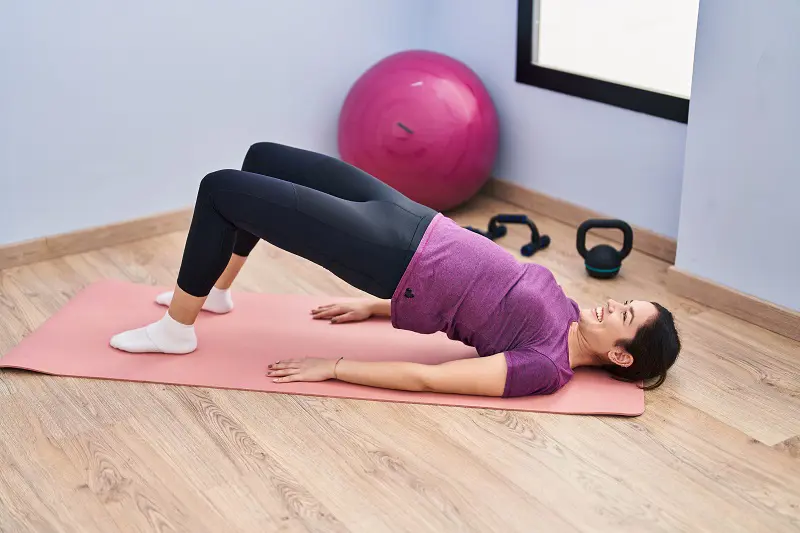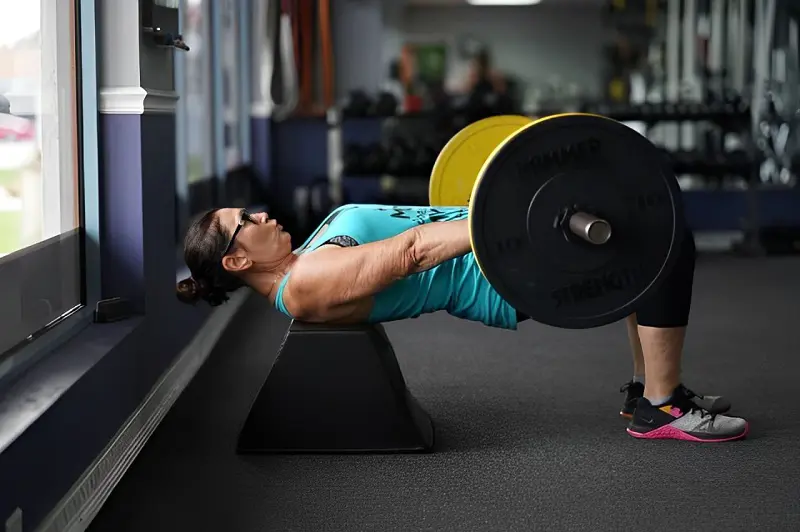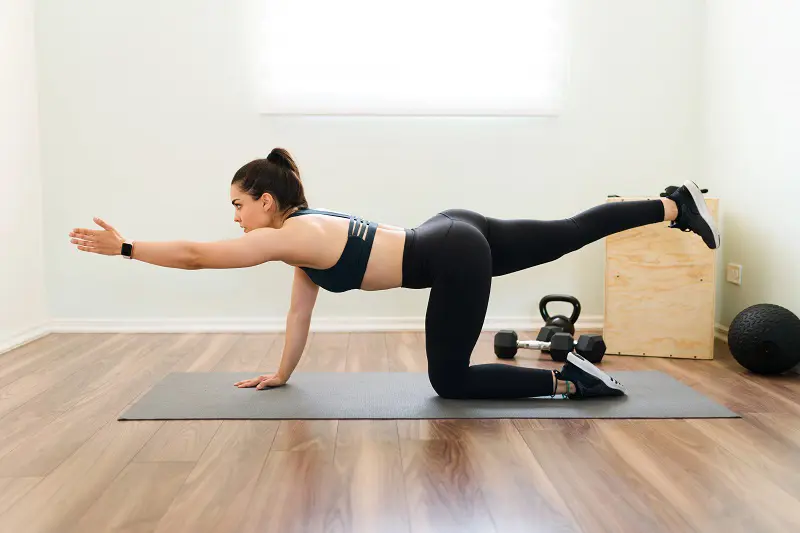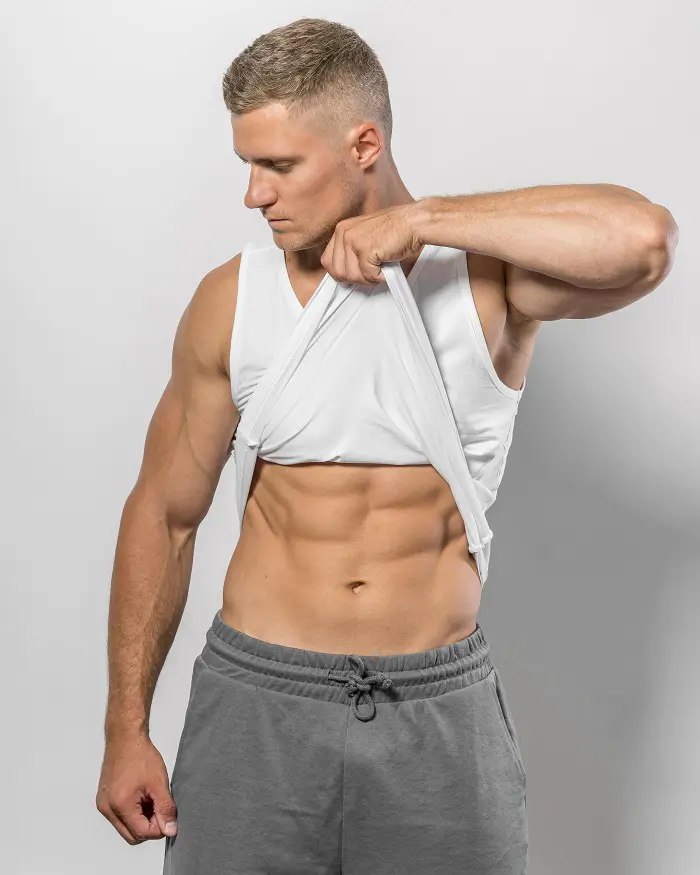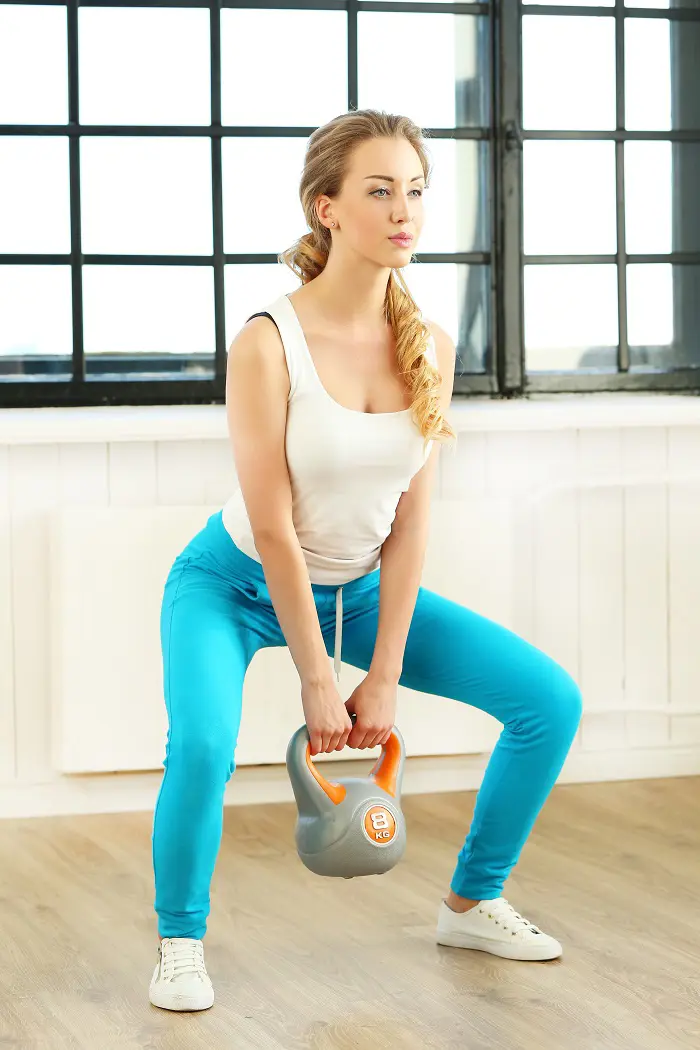Full Body Stretching Routine: 15 Stretches And How To Do
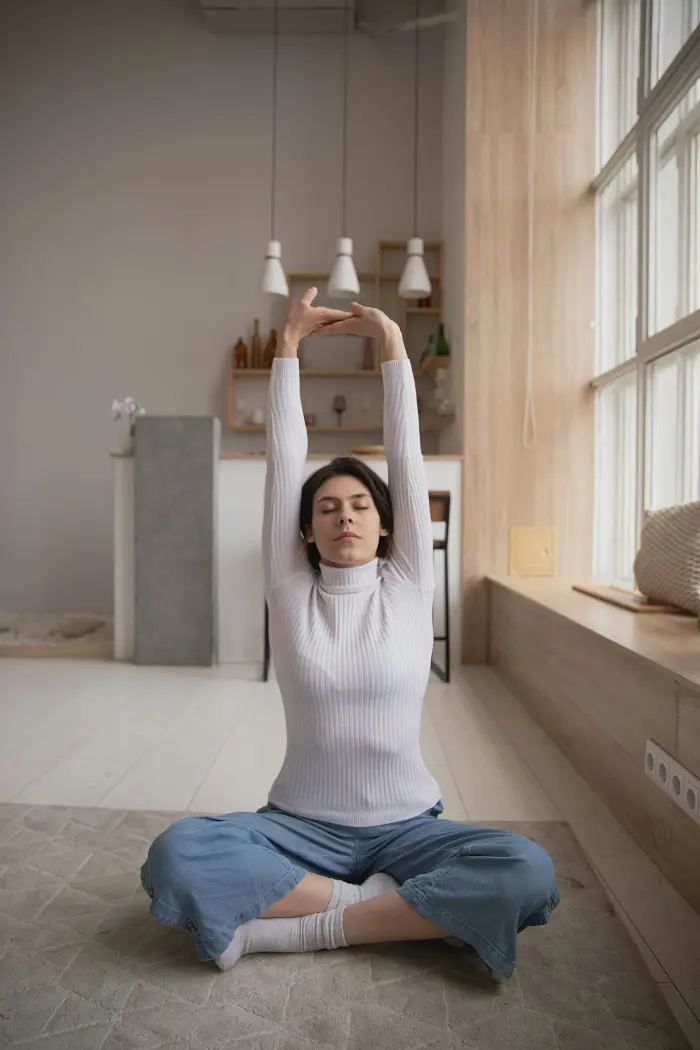
Stretching is a crucial part of pre and post-workout routine, often helping the muscles with better flexibility. Stretching should be a mandatory part of your daily exercise, especially for people with a sedentary lifestyle.
Regularly engaging in full body stretching offers a variety of benefits. From promoting a better posture to improving joint health, you can drastically improve your mobility with only a few minutes of stretching exercises. Here are 15 effective stretches you should consider adding to your daily workout routine:
1. Child's Pose

Child's Pose is a restorative yoga posture that involves kneeling on the floor. This unique workout is commonly used to stretch the back, hips, and thighs while promoting relaxation and mental calmness.
It also helps to improve flexibility and mobility in the spine and hip region. It is a valuable pose for anyone seeking to relieve back pain.
Steps To Follow:
- Be Seated: Begin by kneeling on the floor with your knees about hip-width apart. Sit back on your heels, with the buttocks resting comfortably on your heels.
- Move Your Arms: Reach your arms forward and place your palms on the floor. Keep your arms extended, with your fingers spread wide to create a broad, stable base.
- Lower Your Torso: Gently lower your torso towards the floor, allowing your chest to sink between your thighs. Your forehead should rest lightly on the mat or floor.
- Adjust Your Position: If needed, adjust your knees to be wider apart or closer together. Maintain the position where you are comfortable.
2. Upper Back Stretch
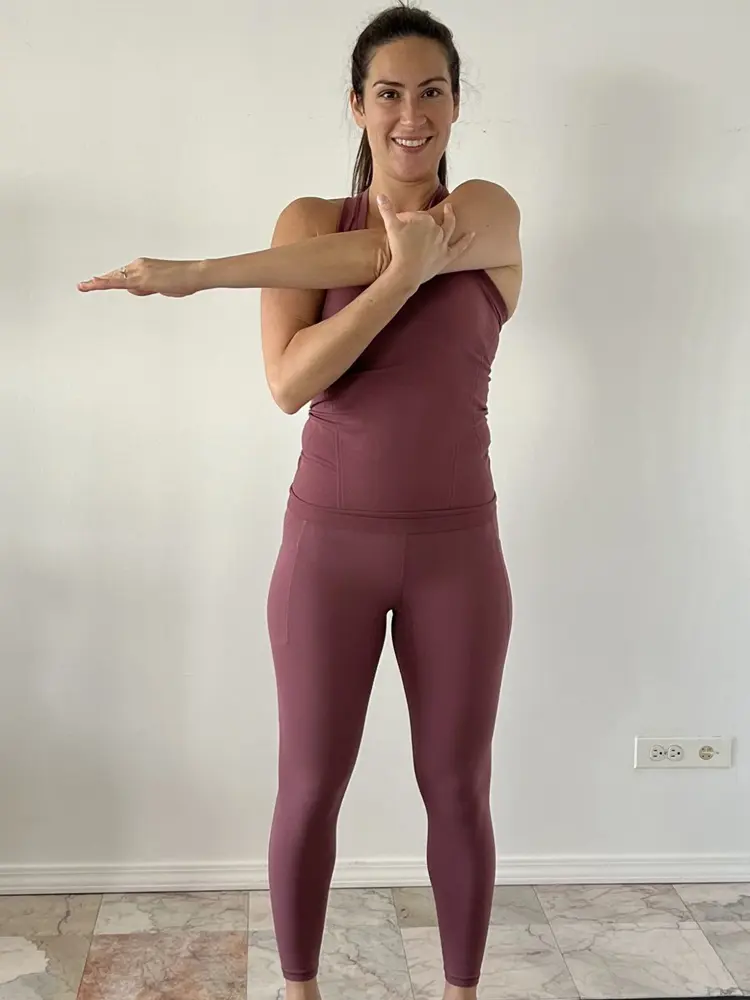
The upper back plays a central role in supporting and stabilizing the spine, shoulders, and neck. Comprising of muscles like the trapezius, rhomboids, and latissimus dorsi, the area is integral in maintaining proper posture and facilitating a wide range of movements.
The muscles can become tight from poor posture, leading to pain, stiffness, and reduced mobility. Considered to be one of the best full body stretches, this routine engages these muscles regularly to help maintain proper alignment and mobility in the upper back.
Steps To Follow:
- Starting Position: Sit or stand with your feet shoulder-width apart and your arms extended in front of you.
- Clasp Hands: Reach both arms straight out in front and clasp your hands together, with your palms facing outward.
- Round Your Back: Push your hands away from your body while rounding your upper back. Imagine spreading your shoulder blades apart and pushing them outwards.
- Lower Your Chin: Gently lower your chin towards your chest to deepen the stretch across your upper back and shoulders. Avoid arching your lower back.
- Hold The Position: Maintain the posture for 15-30 seconds.
3. Standing Quadriceps Stretch
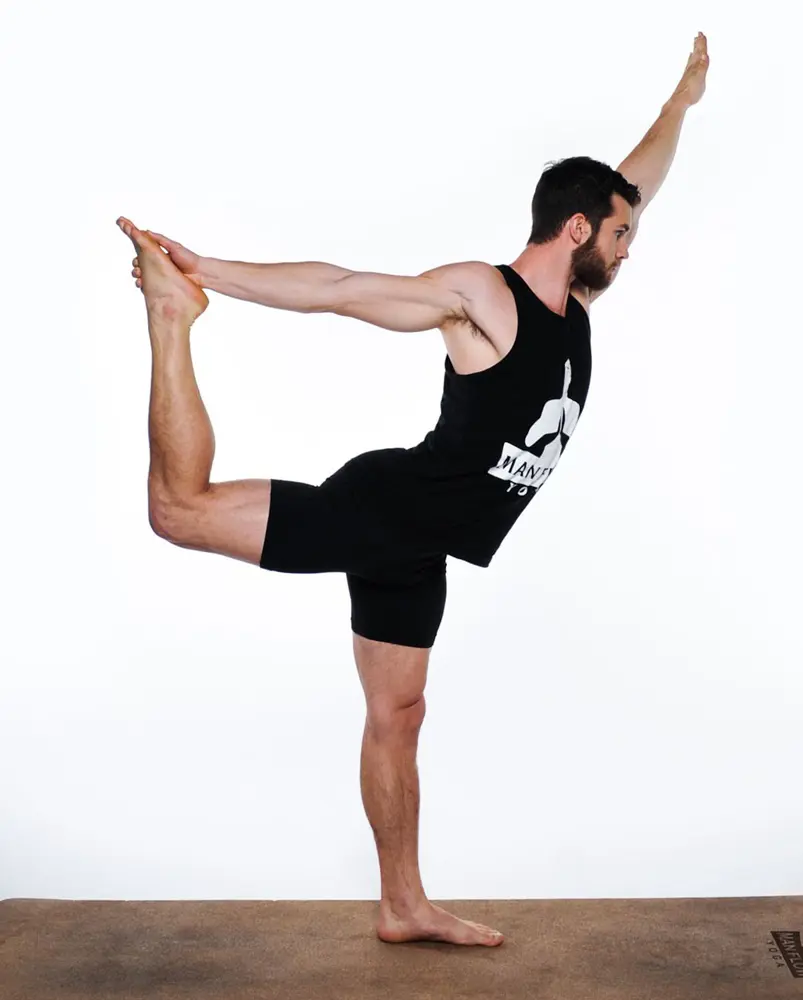
This standing stretch is often preferred over a normal quadriceps stretch because it not only targets the quadriceps but also engages the core and improves balance. By requiring you to balance on one leg, this stretch activates stabilizing muscles in the legs and core.
The quadriceps exercise is a great addition to a full-body stretching routine, as it enhances lower body flexibility while simultaneously strengthening the core. Performing it 2-3 times per week should be sufficient to prevent muscle rigidness.
Steps To Follow:
- Commence: Stand upright with your feet hip-width apart. Keep your posture tall with shoulders relaxed and core engaged.
- Balance: Shift your weight onto your left foot to maintain balance. You can hold onto a wall or chair for additional support if needed.
- Grab Your Foot: Bend your right knee and bring your right heel up towards your buttocks. Reach back with your right hand and grasp your right ankle or foot.
- Stretch the Quadriceps: Gently pull your right foot closer to your buttocks while keeping your knees together. Make sure your right knee points straight down toward the floor. You should feel a stretch in the front of your right quads.
- Switch Sides: Slowly release your right foot and lower it back to the ground. Repeat the stretch on your left leg. Do 2-3 repetitions on each side for maximum benefit.
4. Standing IT Band Stretch
Considered more effective than the seated IT band stretch, this workout charms with its ability to stabilizing muscles and promote better alignment. While seated, the stretch focuses primarily on the iliotibial (IT) band and surrounding muscles, but standing allows for a more dynamic stretch.
In the standing position, you can better engage the core and hip muscles, which helps to align the pelvis and maintain balance. This whole body stretching exercise is surely one of a kind.
Steps To Follow:
- Cross One Leg: Shift your weight onto your left leg and cross your right leg over the left.
- Lean and Stretch: Gently lean to the left side, pushing your hips to the right. You should feel a stretch along the outer side of your right leg, where the IT band runs.
- Reach Overhead: To deepen the stretch, raise your right arm overhead and reach to the left side. This helps in enhancing the stretch along the IT band and the outer hip area.
- Maintain the Position: Keep still for 15-30 seconds, breathing deeply and keeping your posture upright. You should be leaning to the side rather than forward or backward.
5. Hamstring Stretch
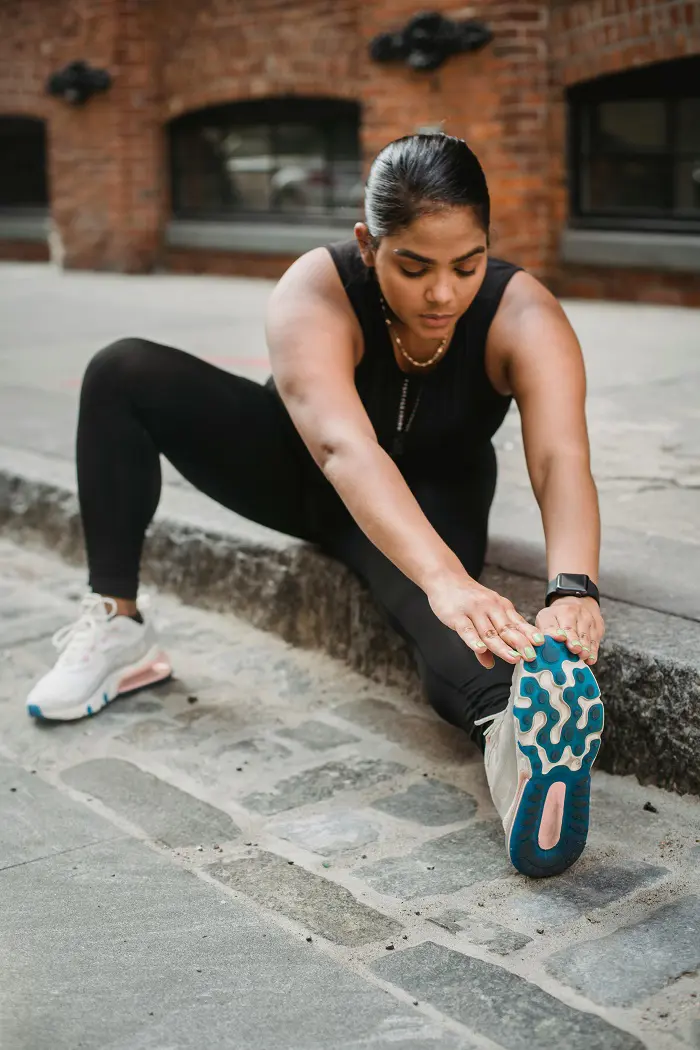
Hamstring-related injuries, such as strains and tears, are common among athletes and individuals who engage in physical activities like running, jumping, or sudden directional changes. These injuries often occur due to tight, weak, or overused hamstring muscles.
Regular stretching improves muscle elasticity and strength. It also reduces the risk of overstretching or straining the muscles during intense activities.
Steps To Follow:
- Start Position: Sit on the floor with your legs extended straight in front of you.
- Bend One Knee: Bend one knee and place the sole of your foot against the inner thigh of the opposite leg. The extended leg should remain straight.
- Reach Forward: Slowly lean forward from your hips, reaching towards your toes on the extended leg. Keep your back straight and avoid rounding your shoulders.
- Hold the Stretch: Once you feel a gentle stretch along the back of your thigh (hamstring), hold the position for 15-30 seconds. Keep breathing steadily.
- Switch Sides: Slowly return to the starting position, then switch legs and repeat the stretch on the other side.
- Repeat: Perform the stretch 2-3 times on each leg for optimal flexibility.
6. Ankle Roll
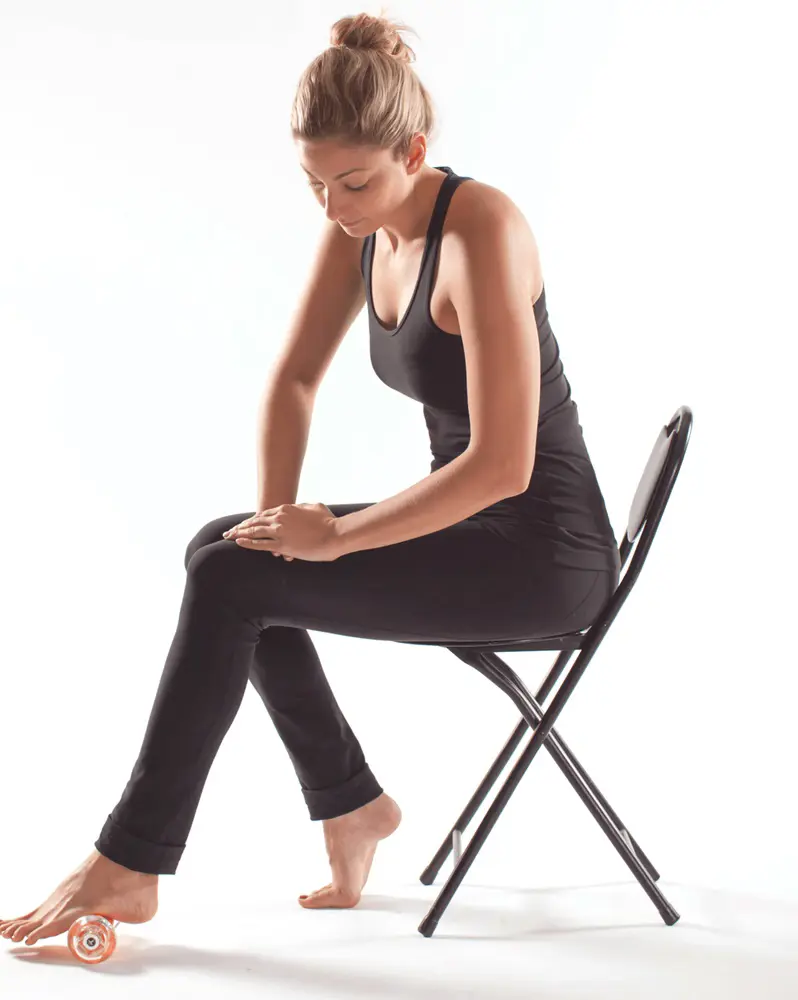
The ankle is responsible for supporting the body's weight and aiding the legs in movements. Any injuries or stress on it can lead to issues like instability and immobility.
Similarly, problems like stiffness or weakness in the ankle can cause compensatory strain on the knees and hips, leading to a higher risk of injury. These full body stretch exercises offer a solution to protecting your ankle health and physical movement.
Steps To Follow:
- Commence: Sit in a chair or lie down on your back with your legs stretched. If standing, hold onto a stable surface like a wall or chair for balance.
- Begin Rolling: Rotate your ankle in a circular motion. Start with a small circle and gradually increase the size of the circle. Perform this movement in one direction.
- Complete the Circles: Continue rolling your ankle in one direction for about 30 seconds.
- Reverse the Direction: Change the direction of the circles and roll your ankle in the opposite direction for another 30 seconds.
- Switch Legs: Lower your foot back to the ground and repeat the exercise with the other ankle.
7. Calf Stretch
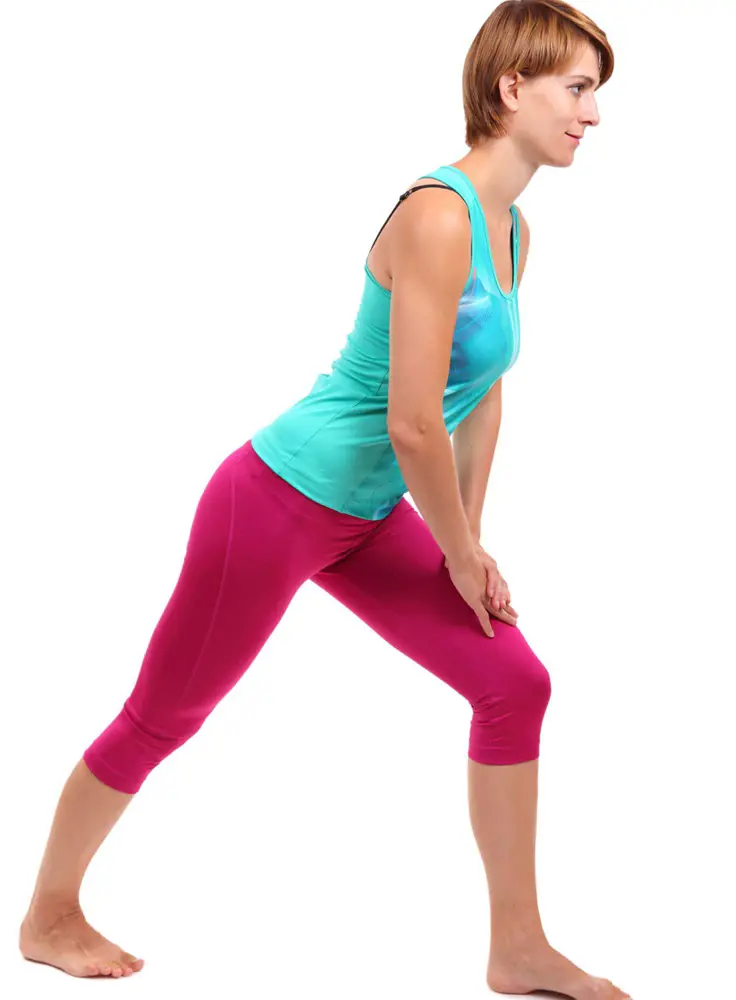
Calf stretch is a flexibility exercise designed to elongate the muscles in the back of the lower leg, specifically the gastrocnemius and soleus muscles. Regular performance of this workout can help tighten the muscles around the ankles and knees.
This stretch is particularly beneficial for athletes, runners, and individuals who spend a lot of time on their feet. Consistent calf stretching also enhances circulation in the lower extremities and leads to quicker muscle recovery post-exercise.
Steps To Follow:
- Position Yourself: Stand facing a wall, about an arm's length away, and place your hands on the wall for support.
- Step Back: Step one foot back, keeping it flat on the ground, and bend the front knee slightly.
- Stretch: Lean forward, pressing the back heel firmly into the floor. You should feel a stretch in the calf of the back leg.
- Hold the Position: Maintain the stretch for 20-30 seconds while keeping your back leg straight and your heel on the ground.
8. Neck Circles
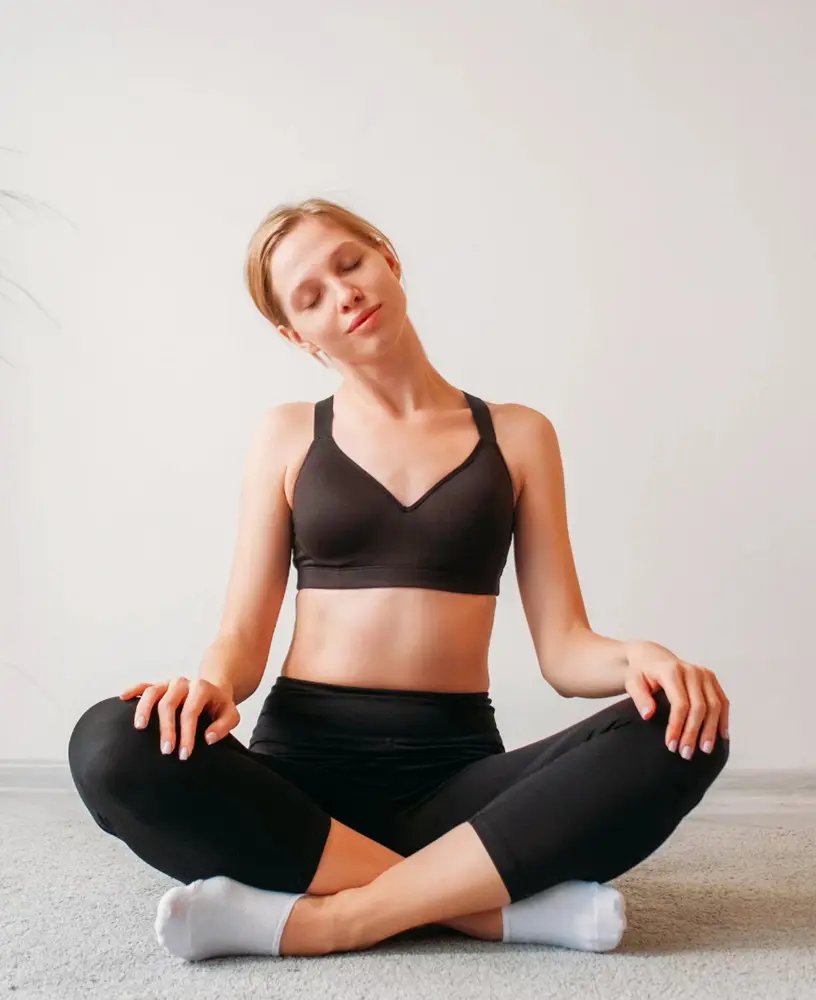
Regularly performing the neck circle exercise helps maintain neck strength and flexibility by promoting circulation and relieving muscle tension. This exercise involves gently rotating the neck in circular motions, which can reduce stiffness and improve the range of motion.
Steps To Follow:
- Begin with a Gentle Tilt: Slowly tilt your head to the right, bringing your right ear towards your right shoulder. Hold this position for a few seconds to stretch the side of your neck.
- Start the Circle: Begin to rotate your head in a slow, controlled circle. Move your head forward, then to the left, then backward, and finally to the right. Complete the circle in a smooth, continuous motion.
- Complete the Motion: Perform 3-5 circles in one direction, then reverse the direction. Ensure the movements are gentle and controlled to avoid straining the neck.
- Return to Center: Finish by returning your head to the center, and aligning it with your shoulders.
- Relax: Take a deep breath and gently shake your neck and shoulders to release any remaining tension.
9. Glute Stretch

The glute stretch primarily exercises the gluteal muscles, which are for physical movements. Tight glutes can lead to compensatory movements and strain on the lower back and hips. This workout routine helps to counter the effects of tightened muscles.
This full body stretch is particularly beneficial for athletes and individuals who sit for long periods. Performing this exercise consistently helps to keep the gluteal muscles supple and functional.
Step To Follow:
- Starting Position: Lie on your back on a mat or soft surface, with both knees bent and feet flat on the floor.
- Cross One Leg: Lift your right leg and cross your right ankle over your left knee, forming a "figure-four" position.
- Grab Your Thigh: Reach your hands through the space created by your legs and grasp the back of your left thigh with both hands.
- Stretch: Gently pull your left thigh towards your chest while keeping your back flat on the floor. You should feel a stretch in your right glute and hip.
- Change Sides: Slowly release your left thigh, return to the starting position, and repeat the stretch on the other side.
10. Chest Stretch
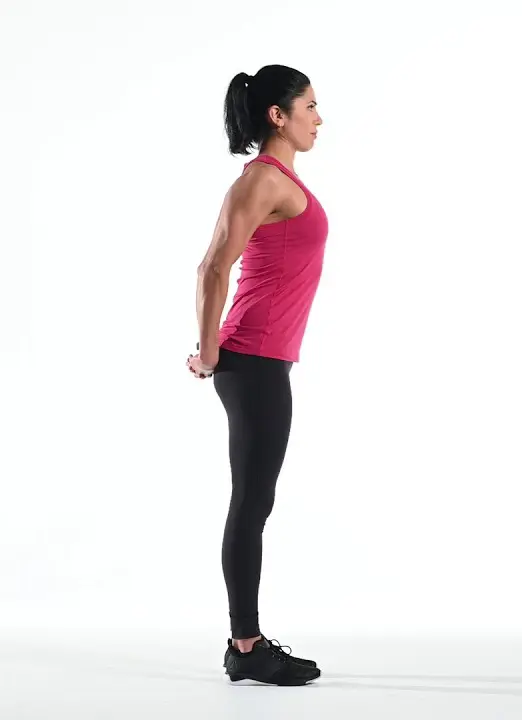
The chest stretch is performed to alleviate tension in the chest muscles, primarily the pectoralis major and minor. It is essential for counteracting the effects of prolonged sitting or poor posture.
Performing these stretches for whole body helps open up the front of the body, balancing out the upper body. It is beneficial for individuals who engage in activities that involve repetitive arm movements.
Steps To Follow:
- Stand Erect: Stand upright while keeping your legs in an open position.
- Stretch Your Arms: Reach both arms out to the sides at shoulder height, with your palms facing forward.
- Open the Chest: Gently pull your arms back, squeezing your shoulder blades together. You should feel a stretch across your chest.
- Release and Relax: Slowly return your arms to the initial position and relax. Take a deep breath and gently shake out your arms if needed.
11. Downward Dog
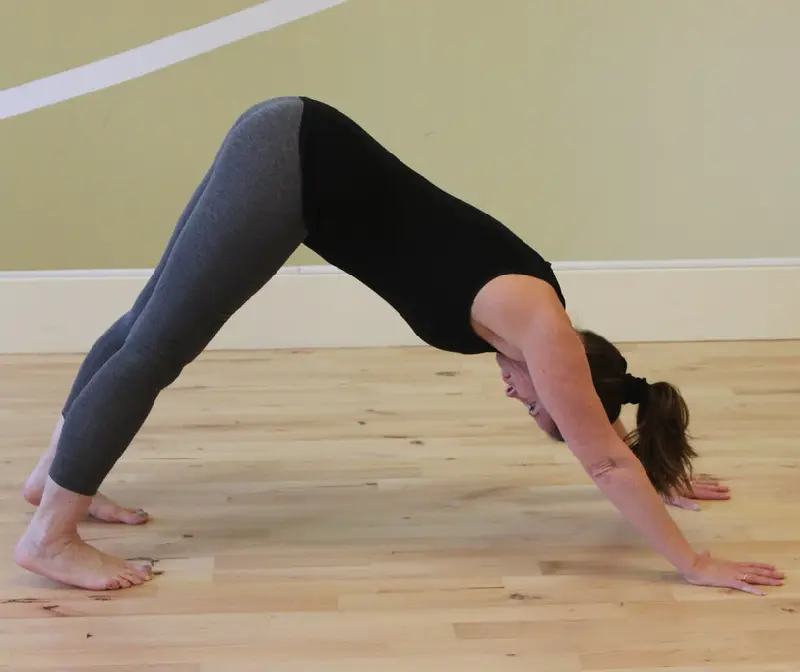
This popular stretching exercise involves forming an inverted "V" shape with your body. The name comes from the resemblance of the pose to the natural stretching posture of a dog.
In this position, your hands and feet are on the ground, your hips raised towards the ceiling, and your head relaxed between the arms. This method is considered an effective full body stretching exercise as it stretches the hamstrings, calves, shoulders, and back, while also strengthening the arms and core.
Steps To Follow:
- Physical Posture: Begin on your hands and knees in a tabletop position. Align your wrists directly under your shoulders and your knees under your hips. Spread your fingers wide and press your palms firmly into the ground.
- Lift Your Knees: Tuck your toes under and, on an exhale, lift your knees off the floor. Start to straighten your legs as much as possible without locking your knees.
- Raise Your Hips: Push your hips up and back towards the ceiling, creating an inverted "V" shape with your body.
- Align Your Body: Keep your head between your upper arms and align your ears with your inner arms. Press your heels towards the ground to deepen the stretch in your hamstrings and calves.
- Engage Your Muscles: Actively press your hands into the mat, engage your core muscles, and draw your shoulder blades down and away from your ears. Keep your spine long and your chest open.
- Hold The Stretch: Maintain this position for 15-30 seconds, breathing deeply and evenly.
12. Hip Rotation
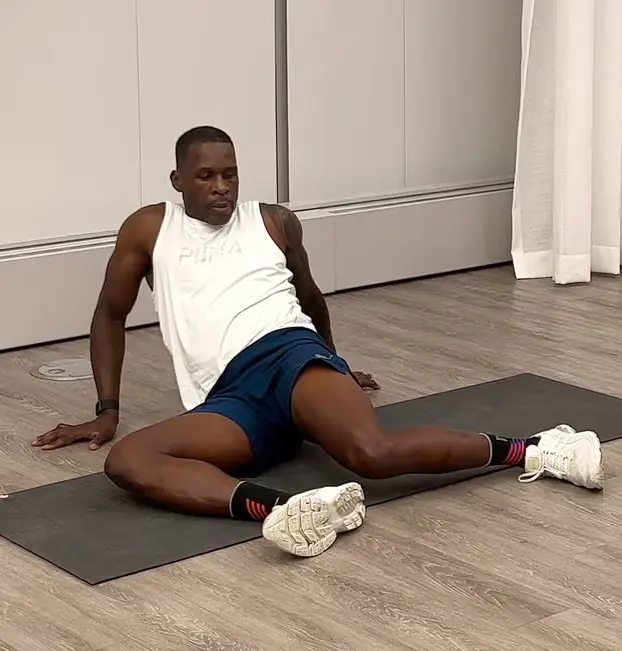
Hip Rotation is a vital component of a whole body stretch due to its role in a wide range of movements, from walking and running to bending and twisting.
Neglecting this exercise can cause reduced flexibility in the hips. Tight hips can contribute to lower back pain, poor posture, and limited motion.
Steps To Follow:
- Sit on the Floor or Chair: Sit on the floor with your legs facing forward. You can perform this stretch while seated on a chair if you are more comfortable.
- Bend One Knee: Bend your right knee and place your right foot on the inside of your left thigh. If seated, you can place your foot on the floor.
- Adjust Your Position: Gently press your right knee down towards the floor with your right hand to deepen the stretch. Keep your back straight and avoid rounding your shoulders.
- Begin Rotation: If seated, lean slightly forward to increase the stretch.
13. Shoulder Stretch

When performing the shoulder stretch, it’s essential to focus on proper technique to avoid injury and maximize effectiveness. Key considerations include maintaining a relaxed posture and avoiding excessive pulling or overextending the shoulder joint.
Additionally, it’s crucial to balance shoulder stretches by addressing both the front and rear shoulder muscles.
Steps To Follow:
- Starting Position: You can perform this exercise by either standing up or sitting down. Keep a shoulder-length distance between the feet, whereas the arms should be by your sides.
- Move One Arm: Reach your right arm straight across your body at shoulder height.
- Pull the Arm: Use your left hand to gently pull your right arm towards your chest. Keep your right arm straight and avoid shrugging your shoulders.
- Feel the Stretch: You should feel a stretch across your shoulder and the upper part of your back. Hold the stretch for about 30 seconds, breathing deeply and maintaining a relaxed posture.
14. Figure Four Stretch
The Figure Four Stretch effectively targets the muscles that are often tight from prolonged sitting or physical activity. These muscles include hip flexors, glutes, and the piriformis muscle.
Moreover, these full body stretches help in providing comfort during lower back pain. Practice the method 3-4 times a week for maximum effect.
Steps To Follow:
- Initial Position: Lie flat on your back on a comfortable surface, such as a yoga mat. Bend both knees and place your feet flat on the floor.
- Cross Your Leg: Lift your right leg and place your right ankle over your left thigh, just above the knee, forming a "figure four" shape with your legs.
- Engage the Stretch: Thread your right hand through the gap created by your legs and interlace your fingers behind your left thigh. Your left hand should reach around the outside of your left thigh.
- Pull Your Leg Inward: Gently pull your left thigh towards your chest, feeling a stretch in your right hip and glute. Keep your head and shoulders relaxed on the mat.
- Hold the Position: Maintain this stretch for 20-30 seconds, breathing deeply and steadily. Make sure to keep your right foot flexed to protect your knee joint.
15. Inner Thigh Stretch

This workout targets the adductor muscles of the inner thigh, responsible for stabilizing the hips and knees during various activities. Regularly stretching these muscles helps maintain flexibility, prevent injuries, and improve physical motions like walking and running.
Steps To Follow:
- Shift Your Weight: When standing upright, slowly bend your right knee and shift your weight to the right side, keeping your left leg straight. As you bend your right knee, your hips will move to the right.
- Stretch the Inner Thigh: Lean into the stretch by pushing your hips slightly backward, ensuring your back stays straight and your core is engaged. You should feel a stretch along the inner thigh of your left leg.
- Hold the Position: Maintain this position for about 15-20 seconds, breathing deeply and keeping your body relaxed.
- Change Sides: Slowly shift your weight to the left side by straightening your right leg and bending your left knee. Repeat the stretch on the opposite side.
- Repeat: Perform 2-3 stretches on each side to enhance flexibility and muscle relaxation in the inner thighs.
Recent posts
How To
How To
How To Get Rid Of Neck Hump With Exercises At Home
A neck hump is a curved appearance in the back of our neck that may lead to an unflattering look and discomfort. Also known as Dowager’s Hump or Kyphosis, this condition is often caused by poor posture, aging, or weight gain. Fixing it could ta...
How To
A Guide On How To Do Dumbbell Pullover Exercise Properly
A dumbbell pullover is a well-known strengthening exercise loved by bodybuilders for working the chest and back. It also builds your lats and triceps, making them an ideal addition to your strength workout routine. When you are in your first attempt,...
How To
How To Do Clamshell Exercise Properly For Strong Lower Body
Strengthen your glutes, core, and legs with the clamshell workout. Practicing it consistently can offer lots of benefits, from reducing back pain to improving balance. While it might seem confusing for a newcomer, this exercise is quite simple - lie ...
How To
How To Do Glute Bridge Exercise Correctly For Beginners
Glute bridge is a fantastic exercise that targets the glutes, core, and hamstrings. People practice it to strengthen their glutes, improve core stability, and even reduce back pain. To truly reap these benefits, though, we have to perform it correctl...
How To
How To Do Hip Thrusts: Methods, Benefits And Types
The hip thrust is a great bodyweight move for building strong glutes and a solid core. Also called the hip thruster, it’s great for improving posture and easing lower back pain. To get the most out of it, nailing the form is key. Everything fro...
How To
How To Do Bird Dog Exercise? Techniques, Types And Benefits
If we want to enhance core strength and spinal stability, Bird Dog is a fantastic bodyweight exercise to include in any workout routine. It activates various muscle groups like abdominals, glutes, and erector spinae. The movement itself isn’t t...



